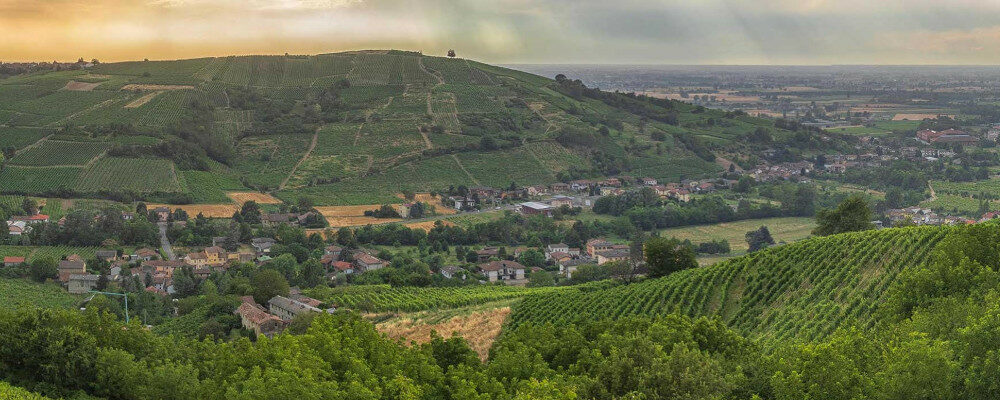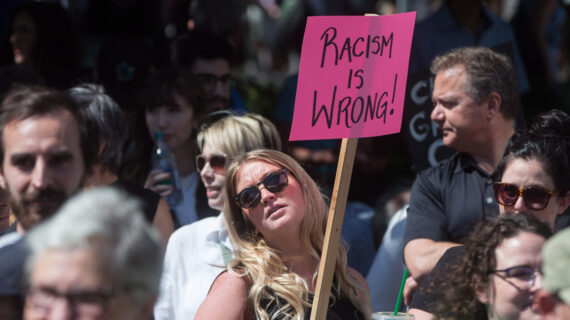This column is not about the mechanic in Long Island whose teenage lover shot his wife in the face 30 years ago. So, if it inspires further research, by way of Google, I strongly suggest adding the word “wine” to the term Buttafuoco. Though, even then, the results might be mixed.
Buttafuoco is the name of a relatively obscure red wine from a hilly region in the North of Italy called the Oltrepò Pavese. The name of the region roughly translates to “over the Pò River from Pavia”. Pavia, which lies on the north side (left bank) of Italy’s biggest river, is the first town of significance south of Milan. And Buttafuoco wines are only relatively obscure because they are known well and appreciated in Northern Italy’s biggest city, though rare outside of it.
I learned this and much of what follows on a Monday afternoon earlier this month. I learned it from Giulio Fiamberti, Milan. Sadly, I was not in Milan but seated at a tasting hosted by the Italian Trade Agency in Canada at a restaurant in downtown Toronto. Fiamberti, whose family has been making wine in the Oltrepò Pavese for more than two centuries, was leading a master class in Buttafuoco live in Milan and virtually, via Zoom, in Toronto, London, and New York.
The event was part of Milano Wine Week 2022, a consumer and trade show. The Fiamberti tasting and seminar were sponsored by Azienda Agricola Giulio Fiamberti, so it was focused unsurprisingly on their wines.
I signed up for the seminar out of curiosity: I was not sure whether or not I had never heard of Buttafuoco wine, or had but had forgotten about it. I knew I remembered the name of the mechanic who had killed the Long Island Lolita and wondered if that’s why the name seemed vaguely familiar. In any event, the wine was obscure enough in 2015 to go without a mention in the encyclopedic Fourth Edition of the Oxford Companion to Wine, and I went into the tasting with a blank (and open) mind.
Buttafuoco is a red blend, led by the grape Croatina. Although it also means “Croatian girl”, it has no shared DNA with the actual Croatian native grape Hrvatica. It is thought to have originated in the Oltrepò Pavese, though it is found across the North of Italy, in Piedmont, other parts of Lombardy, Emilia-Romagna, and Veneto. Because every topic in Italian wine requires at least one point of confusion, Croatina is also called Bonarda in the Oltrepò Pavese, especially when it’s made into a sweet sparkling wine, of the same name.
The second mandatory blending grape in Buttafuoco is where things get weird (or interesting); it’s Barbera. The hills south of the Po were at one time administered by the Piedmontese, so they must have brought their most popular red grape with them. To meet the discipline of the Buttafuoco Oltrepò Pavese DOC, the wines must have a minimum of 25 percent Croatina and 25 percent Barbera. The other red grapes must be indigenous to the Oltrepò Pavese: Uva Rara and Ughetta di Canneto. In practice, the wines are almost always dominated by Croatina (say, more than half), followed by a generous portion of Barbera (say, 30 percent or more) and small amounts of the other two.
It’s at the point of blending where Buttafuoco Oltrpò Pavese gets really weird (or really interesting). The wine is a field blend, but not in the traditional sense of the word. Normally field blends are wines that are made from vineyards where the vines of different kinds of grapes are all mixed up. So one row might contain a few different varieties on it, that all get picked and subsequently fermented together as they literally come off of the field.
Sometimes this works and the field is left with lots of different varieties on purpose. The most famous example that comes to mind is Napa Valley producer Stags’ Leap, whose Ne Cede Malis Petit Sirah, is made up of 17 different varieties of grapes, though dominated by the one on the label. Most of the time, though, winemakers prefer to be in control and blend different wines from different grapes in the cellar, adjusting amounts and ratios by taste.

Viticulture in the Oltrepò Pavese is different. It’s a very hilly land, so agriculture outside of growing vines is barely present on the steep slopes. The vines on the hills are either very old or replanted in place of ones like it. There is a hierarchy of grape varieties based on height. Croatina is thick-skinned and, all things being equal, takes the longest to ripen. Barbera less so.
Croatina is always found at the top of the hill. From the point of view of a Vitis vinifera vine, being at the top of the hill has two advantages. First, there are no or fewer shadows, which means more hours of sunlight. Second, cold air settles downward and tends to pool at the bottom of the hills, so being higher up means being warmer, especially at night towards the end of the growing season.
With hilltop advantages, the Croatina can catch up in terms of ripeness with Barbera and the other grape varieties, and the entirety of the vineyard can be picked, pressed, and fermented at once. The blend really has been made deliberately in the field.
So, does it work? Yes, it does, if the 2017 Fiamberti Buttafuoco DOC Vigna Sacca del Crete is anything to go on. Giulio Fiamberti described it as having “cherry from Croatina and spice from Barbera.” Five years old, but still young with some oak notes and gripping tannins, from dark cherry it edged into blackberry and held a herbal Mediterranean note. The 2016 Fiamberti Buttafuoco DOC Storico Vigna Solenga, brought more dark cherry under a bouquet of violet, Mediterranean twang, and a seasoning of tobacco. It was also young and gripping on the tannins. These wines are clearly meant to age, though would do well with an osso buco, anyway.
Good news: the virtual tasting with Giulio Fiamberti was possible because Cottonwood Wine & Spirit Agency brings the wines into Canada, or at least Ontario. The less good news is that they are not cheap, retailing between $80 and $90 a bottle.




